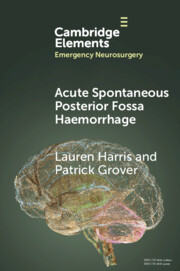Objectives: The cerebellum (CB) is known for its role in supporting processing speed (PS) and cognitive efficiencies. The CB often sustains damage from treatment and resection in pediatric patients with posterior fossa tumors. Limited research suggests that CB atrophy may be associated with the radiation treatment experienced during childhood. The purpose of the study was to measure cerebellar atrophy to determine its neurobehavioral correlates. Methods: Brain magnetic resonance images were collected from 25 adult survivors of CB tumors and age- and gender-matched controls (Mage=24 years (SD=5), 52% female). Average age at diagnosis was 9 years (SD=5) and average time since diagnosis was 15 years (SD=5). PS was measured by the Symbol Digit Modality Test. To quantify atrophy, an objective formula was developed based on prior literature, in which Atrophy=[(CB White+CB Gray Volume)/Intracranial Vault (ICV)]controls-[(CB White+CB Gray+Lesion Size Volume)/ICV]survivors. Results: Regression analyses found that the interaction term (age at diagnosis*radiation) predicts CB atrophy; regression equations included the Neurological Predictor Scale, lesion size, atrophy, and the interaction term and accounted for 33% of the variance in oral PS and 48% of the variance in written PS. Both interactions suggest that individuals with smaller CB lesion size but a greater degree of CB atrophy had slower PS, whereas individuals with a larger CB lesion size and less CB atrophy were less affected. Conclusion: The results of the current study suggest that young age at diagnosis and radiation is associated with CB atrophy, which interacts with lesion size to impact both written and oral PS. (JINS, 2016, 23, 1–11)


